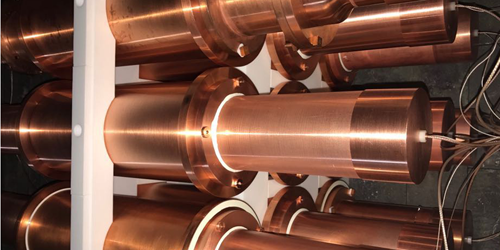Experiment Casts Doubt on Potential Dark Matter Find
For about two decades, physicists have been tantalized by results from the DAMA/LIBRA experiment in Italy, which hint at the detection of dark matter particles. Now, a team at the University of Zaragoza and Canfranc Underground Laboratory in Spain presents an analysis of three years of data from the nearly identical Annual modulation with NaI Scintillators (ANAIS) experiment [1]. The new data tentatively refute the claim that DAMA/LIBRA detected dark matter but do not yet exclude the possibility completely.
Though several searches have ruled out dark matter particles in portions of their respective parameter spaces, no experiment before ANAIS had repeated DAMA/LIBRA’s search closely enough to confirm or refute its finding. Both DAMA/LIBRA and ANAIS are based on thallium-doped sodium iodide scintillators, which produce photons when they interact with ionizing radiation. If some of these interactions involve dark matter particles, the experiments should see a seasonal variation in the number of photons detected. This periodic pattern should arise because Earth’s annual revolution around the Sun changes our planet’s velocity relative to the Galaxy’s cloud of dark matter.
The DAMA/LIBRA team reported seeing such an annual modulation, implying the detection of dark matter. However, the ANAIS experiment finds no sign of this modulation in three years of data at a sensitivity of about 2.7 sigma, suggesting that the earlier experiment’s finding could be due to an unaccounted-for systematic artifact. By late 2022, the team says, ANAIS will have enough data to exceed the 3-sigma sensitivity threshold typically required to be considered evidence for or against a hypothesis.
–Erika K. Carlson
Erika K. Carlson is a Corresponding Editor for Physics based in New York City.
References
- J. Amaré et al., “Annual modulation results from three-year exposure of ANAIS-112,” Phys. Rev. D 103, 102005 (2021).




